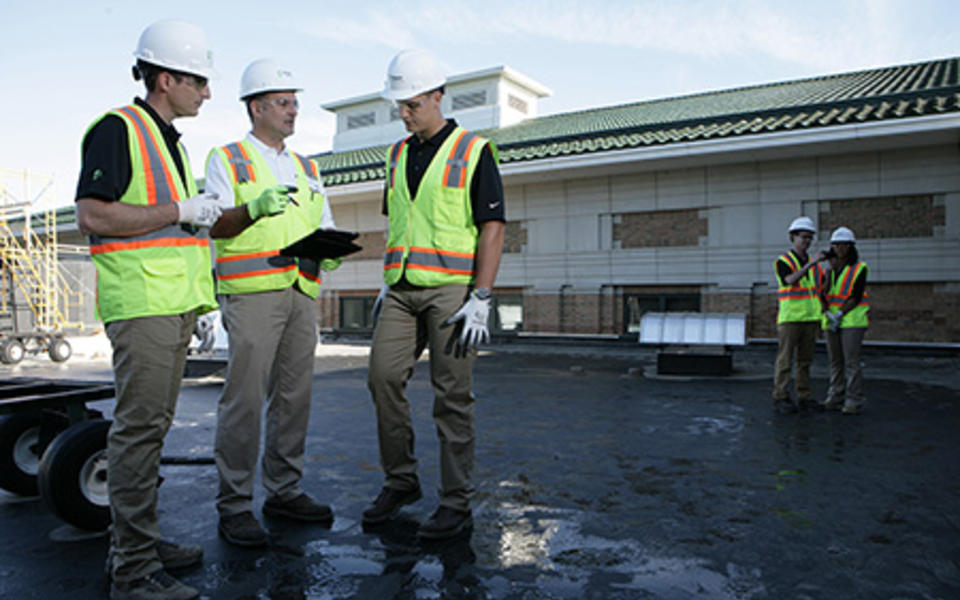Industry insights
Evolving from diversity management to inclusion
Regardless of your industry, inclusion, minority involvement, and diversity are critically important topics. Fifteen years ago, joining an organization that valued diversity was a consideration, but at that time the importance that was placed on the topic was certainly not what it is now.
Past initiatives included specific participation requirements on projects, but without a means of ensuring the success of the companies involved, the numbers were just that – empty stats.
At the time general contractors didn’t have the right structures or programs in place to make a meaningful impact. They found ways of meeting the established targets when required, but the real diversity was visibly lacking on jobsites.
Times are changing. According to an article by Associated Builders and Contractors (ABC): “There is a marked demographic shift in construction company ownership towards minorities and women. By the end of 2020, more than 50 percent of businesses entering the construction industry will be minority- or female-owned.”
Today, organizations and owners who truly care about changing the makeup of the construction industry are more sophisticated about how they request, monitor and record diversity.
Likewise, todays contractors are more thoughtful about how we address and meet diversity targets. While the progress that has been made is sure to get us incrementally closer to where we want to be, the landscape of our industry is not without obstacles. There’s still room for improvement, and everyone knows it.
A shared understanding of what inclusion looks like
Pepper’s Senior Project Coordinator Sharon Jackson joined Pepper Ohio in 2009, and she has been in the industry for 30 years. She explains her perspective on how the industry has evolved:
“Up until 10 years ago we had percentage requirements, and that was it. Back then, I saw a lot of paperwork pass through, without staff on site working. I didn’t think that was giving the companies the opportunity to show their own skills in the scope of work they do.”
In the past several years we’ve shifted our focus from checking boxes to making a real impact in our local communities.
The first step is re-framing the conversation. Instead of focusing on diversity, which emphasizes quantities, we’re focusing on inclusion in an effort to emphasize quality instead of the quantity of effort.
Pepper Illinois’ Senior Project Coordinator Jacquelynn (Jackie) Brooks has been with the company for more than 20 years and shares how the right perspective has allowed her to advance in her career. “Achieving equity is not about numbers. It’s about inclusion and opportunity, and most importantly it is the recognition of capabilities.”
As an industry we’re heading in the right direction, but we’re still not consistent in how we define and implement inclusion programs. It’s plainly clear there is room for further improvement.
The challenges of changing the diversity landscape
Having the best intentions doesn’t always lead to results. So if we want to make a difference in the diversity landscape, it’s important to understand the challenges we’re up against:
- Just because we invite diverse contractors to participate, it doesn’t mean they will be the successful bidder.
- Though construction doesn’t require an advanced degree, the work still requires skilled tradespeople, and there is a cost in acquiring those skill sets.
- Not all of the strategies that we put in place, no matter how well intentioned, achieve the desired results when implemented. For example, 2nd tier contracting strategies allow for the percentages to be achieved, but if not supplemented with other strategies, it’s easy for it to become an accounting practice.
Alternative ideas for achieving inclusion
Those companies that are making a difference are taking a proactive approach in their efforts to better understand their diverse partners - their perceptions and challenges. They help manage the paperwork, help them through the prequalification process and any security procedures, and are diligent about not allowing accounting issues to hold up payment.
These contractors are often building connections outside of specific projects. This ensures diverse contractors are a regular part of their bidders’ list and allows them to encourage successful teaming strategies when needed.
All about relationships
“The key to success is building relationships ahead of time so we know each other and our expectations,” suggests Sharon. “If we want to form good partnerships, we have to center our efforts around building relationships and not just doing projects.”
She continues, “I have friendships that go back 30 years. They donate to our food drive, and I feel comfortable contacting them anytime.”
It’s also important to be engaged with the organizations that are advocating for these firms, like National Association of Women in Construction (NAWIC) and the African American and Hispanic chambers of commerce.
There has been an obvious shift from accounting for hours to hit targets to building a network and relationships well in advance of the project. We’re starting to get it. Larger GCs are mentoring smaller minority GCs and showing them how to be successful. We’re teaming up on projects and both of us are growing from the experience. These efforts are providing training, mentorships and more opportunities for smaller more diverse companies.
The upside for us is engaging different populations who bring different perspectives to the work. We both learn.
Jackie agrees: “To be honest, when we are inclusive of more diverse backgrounds, we often see innovation and new ideas because of different expertise and experiences.”
Diversity helps us serve our clients better, anticipate their needs more readily and engage the communities in which we build. Jackie believes that clients who are motivated to include diversity goals want to hire general contractors who share this value. And we do our best work for the people with whom we are aligned.
“Let’s recognize too, that our clientele is also highly diverse,” she explains. “We work with people of all ages, races, religion and genders. When we put forward a diverse workforce, we can better meet our client’s needs.”
For us, team members like Sharon and Jackie, who are genuinely committed to improving diversity in our communities, fill an important role in creating a culture that values inclusion.





